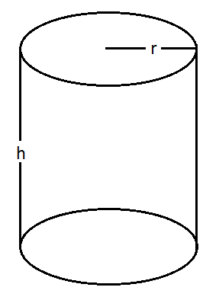
A solid cylinder is a three-dimensional geometric shape that is formed by a circular base connected to a curved surface, extending vertically to another circular base. The volume of a solid cylinder represents the space enclosed within its curved surface. To calculate the volume of a solid cylinder, we need to know the radius of its base and its height.
To determine the volume of a solid cylinder, we use the formula V = πr²h, where V represents the volume, r is the radius of the base, and h is the height of the cylinder. Here, π (pi) is a mathematical constant approximately equal to 3.14159.
By substituting the values of the radius and the height into the formula, we can calculate the volume of the solid cylinder. For example, let’s consider a solid cylinder with a base radius of 5 units and a height of 10 units:
V = π(5)²(10)
= π(25)(10)
= 250π cubic units
Hence, the volume of the solid cylinder with a base radius of 5 units and a height of 10 units is 785.39816 cubic units.